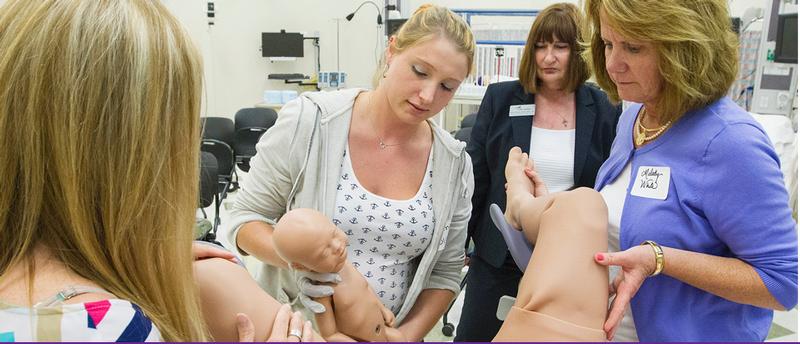ECU College of Nursing hosts statewide conference on simulation technology
The College of Nursing’s reputation as a leader in simulation-based education played a role in bringing a statewide conference on simulation technology to East Carolina University in May.
Approximately 150 health care professionals from across the state visited ECU on May 30 for WakeMed Health & Hospitals Go SIMple Conference, which featured lectures and training on the use of simulation technology in education. Attendees included nurses, paramedics, doctors and physician assistants.
“ECU was the perfect place to hold this conference because it truly is an area where simulation is growing and impacting health care providers,” said Amar Patel, director of the Center for Innovative Learning at WakeMed.
The event was an opportunity to showcase the college’s facilities and share expertise in the education use of manikin-based and virtual simulation, said Laura Gantt, executive director of Support Services, Learning Technologies and Labs for the ECU College of Nursing. It’s an important time to talk about simulation in eastern North Carolina, she added.
“Many organizations are just getting patient simulators and are having to figure out a range of things from how to put them together to how to best use them,” she explained. “The science and art of health care simulation is expanding daily. The conference gives attendees at all stages of development a chance to learn new things and network with experts in the field.”
Gantt and others at ECU believe simulation is an effective teaching tool for a number of reasons. The training allows deliberate practice of communication skills and encourages interprofessional collaboration. It also offers experiences with high-risk “patients” which students may not get in normal clinical rotations.
“This type of cognitive and psychomotor rehearsal helps health care providers take best practices or scripts into patient care situations,” Gantt said, “which in turn means learners are better prepared and patients get better care.”
The benefits of interprofessional education and partnerships were also highlighted during the conference’s keynote address. It was delivered by James Cypert, interim president of nonprofit organization SIMGhosts, which supports professionals operating medical simulation technology. He is also on staff at the California Baptist University School of Nursing.
Cypert encouraged health care professionals to reach out to IT departments at their workplaces and engage them in their work. Those in university settings would be wise to build relationships with engineering programs, he advised.
But most important, he said, is to be someone who is not scared by change.
“The technology comes…and builds up fear and anxiety,” Cypert said. “It’s not beyond you. There are usually eight to 10 ways you can do exactly the same thing.”
He encouraged attendees to simply “find the one that works for you.”
More about the ECU College of Nursing’s simulation-based education efforts and training with the Brody School of Medicine is available at http://www.ecu.edu/cs-admin/news/simulation14.cfm.
###

Mary Kelly, Jamie Kulick, Jeanette Whalen and Karla Olson monitor simulated contractions while using a delivery simulator.
